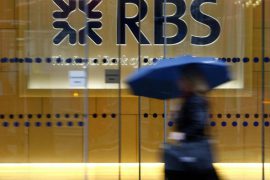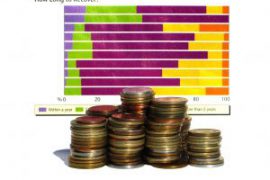Today Royal Bank of Scotland revealed annual losses of £1.125 billion – but bank bosses appeared confident that it has “turned a corner” in its recovery.
The bank is 83 per cent state owned, following a government bailout of £45 billion at the height of the financial crisis. While reporting an overall loss over the last year, the figures mark a significant improvement from its 2009 results, when the company posted net losses of £3.607 billion.
Most of the £1.125 billion loss in 2010 was accounted for by an exceptional £1.116 billion charge under the government’s asset protection scheme – effectively an insurance policy to protect UK banks from potential losses from high-risk assets.
The company’s operating profit last year, excluding exceptional elements, was £1.913 billion – compared with a loss of £6.090 billion the year before. Reported bad debt losses were also improved – down 33 per cent to £9.256 billion.
Stephen Hester, Chief Executive of RBS, said: “It’s clear that, two years into our recovery plan, RBS has turned a corner. We have moved to £2 billion of operating profits from £6 billion of loss.”
He added: “At the bottom line, we are still loss-making, but that is because of the money that we are paying back to the government through the asset protection scheme.”
Hester also indicated that he would be happy for the government to sell its stake in the company when the opportunity arises. He commented that: “”RBS was an emblem of the financial crisis. The ability to sell our shares, and for the taxpayer to realise its investment, will be an emblem of recovery.”




